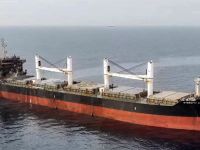Fuel cell technology dating back more than a century could make noisy, polluting internal combustion engines as irrelevant as steam trains. And cars powered with this solution are very likely to run on methanol.
The fuel cell engine for Necar 3 runs on methanol. This vehicle is the first in the world which can convert a liquid fuel to power fuel cells.
The graphite plate may look pretty insignificant, but it forms the very core of a fuel cell - an electro-chemical device which converts hydrogen and oxygen into power.
This seemingly paltry square, measuring just 20 by 20 centimeters, hides a tiny amount of platinum - the world's most expensive metal and possessed of unique electrochemical properties.
While the first fuel cells contained four milligrams of platinum per square centimeter, researchers have now got the required quantity down to a mere 0.1-0.2 milligrams.
The graphite plate is on view at the German headquarters of one of the motor industry partnerships which are working to apply fuel cell technology to vehicles.
Based at Nabern outside Stuttgart, this group embraces car manufacturers Ford and Daimler-Benz of the USA and Germany respectively, and Canadian fuel cell specialist Ballard.
Cars thunder down the autobahn past the quiet and sterile laboratories where researchers are working to develop cleaner vehicles powered electrically by fuel cells.
If they succeed, and such solutions replace today's petrol and diesel engines along the autobahns of tomorrow, polluting exhaust gases will be virtually eliminated.
Daimler-Benz and Ballard have 150 scientists working in this idyllic country setting, behind apple trees laden with fruit and overshadowed by a castle on a mountaintop.
The labs are entered through several sets of unusually solid doors. Inside, engineers, chemists and mechanics are hard at work in an atmosphere of good order and cleanliness which recalls an operating theatre rather than a workshop.
Vice president Werner Tillmetz at Ballard Germany waves two of the graphite squares which surround a fuel cell's core. They are engraved with a complex pattern of grooves.
"Creating this pattern is an expensive business," he explains. "We're constantly working to reduce costs."
Ballard ranks as a world leader with this type of fuel cell, which has been adopted today by nearly all the leading car makers. The exception is Toyota, which aims to develop its own solution.
Over the past five years, the value of Ballard's shares has risen tenfold, and investors are drawing parallels with computer software giant Microsoft.
Daimler-Benz has joined forces with the Canadian company and invested USD 320 million in a joint venture called DBB, with Ford contributing electric motor technology to the alliance.
The aim of the partners is to become the world leader for fuel cell engines and electric cars driven by these devices. They want to blaze a trail for the rest of the industry.
Testing and adjustments are currently under way with the Nebus and the Necar 1, 2 and 3 units.
Unlike conventional electric cars, fuel-cell vehicles will have the same dynamic properties as regular petrol or diesel units. But anyone who enjoys an internal combustion engine's roar will be disappointed.
Fuel-cell cars are virtually noiseless. A low buzz can be heard from the electric motor and the air compressor gives off a discrete hum which can only just be detected over the swish of the tires and similar traffic noise.
The Necar 1, produced by Daimler-Benz in 1994, was the world's first fuel-cell vehicle. It had large hydrogen tanks on the roof and just two seats, with fuel cells filling the whole rear.
Unveiled in 1996, Necar 2 also had hydrogen tanks on top but its fuel cells were smaller and more compact. It could seat up to six people.
The German vehicle-maker has subsequently developed buses powered by hydrogen-based fuel cells. However, the problem for achieving widespread use of such vehicles is to establish a distribution network for the gas.
Hydrogen has to be shipped under very high pressure and - like other gases - is not easy to handle. In addition to being highly flammable, it burns with an invisible flame.
"Without any reason, we're still burdened with the Hindenburg syndrome," says Daimler-Benz vice president Johannes W Ebner. The airship of that name exploded outside New York City in 1937.
The solution could be to use methanol - a liquid which can be produced from natural gas - as a fuel for all types of vehicle.
Daimler-Benz unveiled its methanol-powered Necar 3 model at the Frankfurt car show in the autumn of 1997. Its chassis is the new Mercedes A class, designed for the European small-car market.
As the first vehicle to convert a liquid for powering fuel-cells, Necar 3 gives off no nitrogen oxides, sulphur dioxide or soot. Its main emissions are water and modest amounts of carbon dioxide.
The Necar 3 is 3.57 metres long and weighs 1.7 tones. Releasing 90 per cent of the fuel cell's maximum potential energy within two seconds, it accelerates quickly and smoothly to 50 kilometers per hour. Its maximum speed of 120 kilometers per hour has been deliberately chosen.
A range of 400 kilometers on 38 liters of methanol at this early stage is roughly in line with a petrol-driven car and almost three times the figure for a normal electric vehicle on a single charge.
The procedure for filling a fuel-cell car with colorless methanol is broadly similar to refueling a conventional petrol-driven vehicle. As with the latter, a fuel-cell vehicle's tank can be refilled in a couple of minutes - probably at a service station fitted with many more pumps for different fuels than today's forecourts. By contrast, today's electric cars take many hours to recharge.
The fuel-cell vehicle is at least as easy to drive as an ordinary car. It has no conventional gear, and few moving parts compared with its petrol- or diesel-driven equivalent. That in turn means simpler and cheaper maintenance. Replacing oil, oil filters, spark plugs and valves would become a thing of the past.
In the Nabern lab, project personnel swarm around the front of the little Necar 3 and lift the hood of its tiny bonnet. Compared with a petrol or diesel engine, the contents look pretty meager.
More impressive are the fuel cell system and reformer, which extracts hydrogen from the methanol. These components have been squeezed into the rear of the vehicle, where the back seat should be. The fuel cells in this prototype are no bigger than a suitcase.
"But we need a better cold-start solution," says DBB manager Detlef zur Megede. "However, I'm sure this will be possible."
A decade ago, fuel-cell motors cost a thousand times more than a petrol engine with the same output. The difference today is only tenfold, and developers are confident they can close this gap.
"We're convinced that the fuel cell is the power source of the future," says Mr. Tillmetz. "But a number of technological solutions are still needed, including a way of optimizing methanol injection."
Unfortunately, the engineers are unable to transfer lessons learnt from conventional car engines to the fuel cell because the metals used in the former would rust and the seals disintegrate.
The room behind the three existing prototypes is closed to visitors. It houses the almost completed Necar 4, a further development of the latest model which is due to be unveiled in early 1999.
The physical configuration of the Necar 5 is due to be announced next autumn, with a massive reduction in reformer size and weight as the goal. Along with the vehicle's entire engine and other associated systems, it will fit under the bonnet, floor and luggage compartment.
Daimler-Benz intends to base an important decision on the Necar 5 - whether A-class cars with fuel-cell engines should go into commercial production.
Many people will be looking with great interest to Stuttgart in that connection. The German company is likely to draw a conclusion in late 1999.
If it opts for production, test manufacturing of various model sizes will be pursued in 2000-2004. Planned series production of 40-100 000 units per year could then start.
California is leading the drive towards lower vehicle emissions. The authorities in the US state have resolved that a sizeable proportion of cars must have "ultra-low" or zero emissions by 2003.
This provision makes methanol-fuelled vehicles highly relevant, observes Mr. Ebner. "We envisage big interest in the USA. Everyone's looking to California as the pioneer, and it's one of our biggest markets."
Stricter environmental standards are compelling vehicle-makers to produce more environment-friendly cars and buses. Calculations show that car numbers could double world-wide between now and 2030.
With today's engine technology, such growth would create major pollution problems. As many as 40 000 deaths per year in the USA might be attributable to particle emissions from exhausts, according to the American Methanol Institute (AMI).
In addition, 15 000 Californian flexible-fuel cars can currently fill up with a fuel containing up to 85 per cent methanol at almost 100 service stations.
Conditions in the US state accordingly offer a good basis for new fuel-cell vehicles running on methanol, says strategy and business development manager Sjur Haugen in Statoil's Methanol business area, who is paying a visit to the German labs.
The AMI has identified oil industry participation as crucial in creating a methanol network, and estimates the bill for converting petrol stations to methanol outlets at USD 50 000 per forecourt.
Although the cost of installing storage and pumping facilities for methanol is reasonable, expenditures associated with site acquisition, buildings and brand development are many times higher.
While many car-makers see converting existing service stations to supply methanol for fuel-cell cars as the best approach, they are not convinced that the oil companies will help to pay for it.
Drivers need the same access to methanol as they already enjoy for petrol. The easiest way to achieve that would be for their present fuel supplier to start selling the new product, says the AMI.
It calculates that car-makers will have produced two million fuel-cell vehicles running on methanol by 2010. If each unit consumes 2 000 liters of fuel per year, annual demand will reach four billion liters - less than eight per cent of global production capacity.
"Equipping service stations with separate pumps for methanol is no more difficult than installing them for unleaded petrol," observes Mr. Ebner.
"Some oil companies are unhappy to see the car industry focusing on alternatives to oil-based fuels. We must convince them that methanol is a good solution, so we're open about our plans."
Daimler-Benz's strategy for fuel cells embraces both hydrogen and methanol. The car-maker believes that the former is best suited for public transport because gas tanks are so large and filling points limited in number.
Since methanol is liquid at room temperature, Daimler-Benz argues that it represents the ideal fuel for small cars. Apart from being easy to reform (convert) to hydrogen, this chemical is sulphur-free.
"That's an important property when choosing a power source for fuel cells," comments Dr Tillmetz. "And future solutions will combine reforming and power generation in a single process.
"A commercial breakthrough for the technology involved in such fuel cells is still a few years away, but we believe in this and are pursuing research into it."
Tougher environmental standards demand innovative solutions, and these in turn will determine tomorrow's motor fuels.
Unlike petrol or diesel oil, methanol does not derive from crude oil but is a product of natural gas. Large volumes of the latter are available both inside and outside the Organization of Petroleum Exporting Countries (Opec).
A mere couple of years ago, US car-makers in Detroit were writing off fuel cells as an illusion and claiming that it would take many decades to bring such cars to the market. Phasing out the internal combustion engine was denigrated as "politically correct" rhetoric.
Symbolic politics or not, the lights now appear to be changing from red to green for fuel-cell vehicles. Researchers are working on such solutions at General Motors, Chrysler, Nissan, Honda, Volkswagen and Volvo as well as the companies already mentioned.
But car-makers in Stuttgart, Tokyo and Detroit disagree over the direction this development will take. A "green" race is under way, with Daimler-Benz and Ballard currently in the lead.
Note: first published in1998.
Source: Statoil.com.
© 2000 Mena Report (www.menareport.com)







